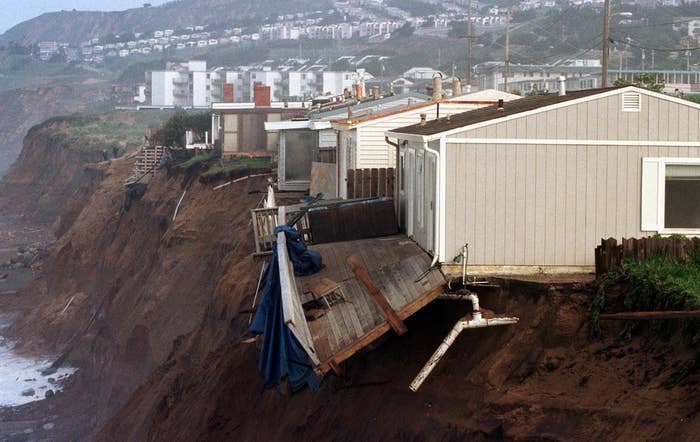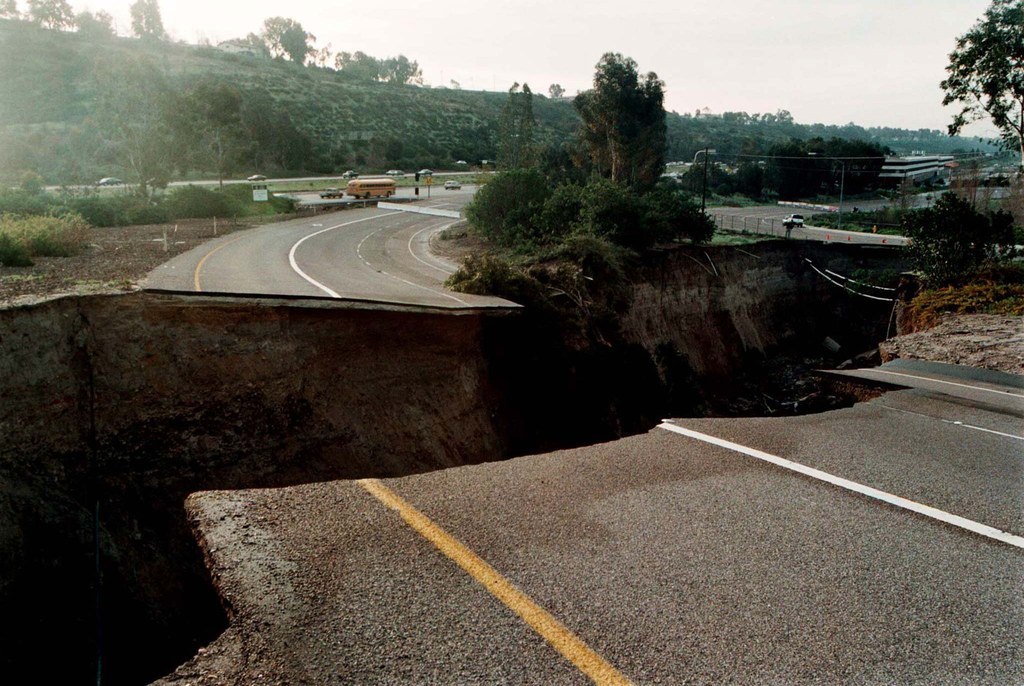
One of the strongest El Niños in recorded history could fuel powerful Pacific storms this winter, potentially offering drought relief in California as well as flooding danger.
A new report released Thursday by the National Oceanic and Atmospheric Administration said there is now "a greater than 90% chance that El Niño will continue through Northern Hemisphere" this winter. There's an 85% chance the warming will last even longer and continue into next spring.
And it won't just be any El Niño. Robbie Munroe, a meteorologist with the National Weather Service in Oxnard, California, told BuzzFeed News that current projections show the pool of warm water in the Pacific could be the strongest ever observed.
"It'd put it basically into the top five El Niños we've seen since the '50s," Munroe said.
NASA climatologist Bill Patzert told BuzzFeed News last week that the intensifying El Niño is the most powerful he has seen since the record-breaking episode of the late 1990s.
Weather experts are basing their projections on the surface temperatures of water along the equator in the Pacific Ocean. As of Aug. 5, temperatures were about two degrees Celsius warmer than normal in the eastern Pacific and one degree warmer than normal in the central Pacific. As the temperatures rise farther west, it fuels an El Niño.
"It basically provides more energy for the atmosphere," Patzert added, "and with that in place any storms that might come by can tap into that energy."
The most powerful El Niño on record happened in the late 1990s, Munroe said, when sea surface temperatures increased by about 2.3 degrees Celsius. According to the new NOAA report "the forecaster consensus unanimously favors a strong El Niño" with temperatures around two degrees above normal.
All of which is to say, this year's event will likely rival the record-setting El Niño of 1997–1998.
Wondering about the latest El Nino forecast? Here is what we expect. #cawx
The growing El Niño prompted reaction on social media Thursday after Patzert told the Los Angeles Times the event "has the potential of being the Godzilla El Niño."
Super Scientific Godzilla to El Nino level scale. Who can ever forget that Mothra event back in 1997-98? :-)
Upcoming El Nino referred to as "Godzilla" This is different than 1997 El Nino. http://t.co/t6Vo1cO3mO
Can this 'Godzilla El Nino' end California's drought? Well.... http://t.co/IKKIQpriad
http://t.co/ees2TDmJ3K
I'm tracking Super Godzilla El Nino right now. Not going to lie, looks bad! :-)
Despite the parodies, a severe El Niño actually does pose a serious threat to California.
The state's extreme drought is currently in its fourth year and shows no sign of diminishing. A wet winter would consequently be good news for the state, though Munroe said it will likely take multiple years of above average precipitation to end the dry spell.
Update: Since Oct 2011, California missing 1-2+ years of rain. #cadrought
Still, after years of dry weather, wildfires, and virtually no rain, an El Niño could mean mudslides, flooding, and destruction.
Patzert has described the phenomenon as a "double-edged sword," and told BuzzFeed News that in the 1990s he was frequently asked to weigh in on the damage El Niño-fueled storms were causing — rather than its effect on the water supply.

During the El Niño of the late 1990s, California received record rainfall. The rain led to flooding and high surf that ripped apart roads and washed homes off cliffs. The storms fueled by the warmer waters were also blamed for 17 deaths across the state.

The storms had an array of economic impacts as well. According to University of Washington researchers, the El Niño of the late 1990s produced $2.8 billion in property damage, as much as $700 million in agricultural losses, and cost the federal government $400 million for relief.
El Niño even led to a rise in food prices and a dip in tourism, the researchers observed.

None of this necessarily means California is headed for disaster, and the effects of any storms that materialize could be relatively benign.
It's also possible the El Niño could fizzle. Last year, forecasters predicted a powerful event, but the warming dissipated.
